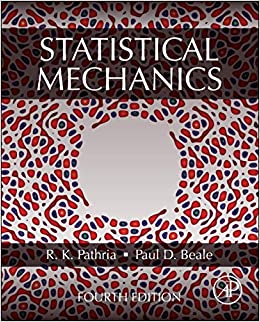Diatomic nitrogen and oxygen molecules can stick to the surface of a container because of van der
Question:
Diatomic nitrogen and oxygen molecules can stick to the surface of a container because of van der Waals forces. Assume that these molecules are stuck to the surface with binding energy \(\varepsilon\), but are free to classically move on the surface and to classically rotate about one axis with moment of inertia \(I\). Show that the Helmholtz surface free energy of \(N_{S}\) molecules stuck on a flat surface with area \(A\) is given by
\[A_{\mathrm{S}}\left(N_{S}, A, T\right)=-N_{s} \varepsilon-N_{S} k T \ln \left(\frac{A}{N_{s} \lambda^{2}} \sqrt{\frac{2 \pi I k T}{\hbar^{2}}}\right)-N_{S} k T\]
where \(\lambda\) is the thermal de Broglie wavelength. Determine the heat capacity, and explain the result using the equipartition theorem. Also determine the two-dimensional "pressure," and the chemical potential.
Step by Step Answer:






